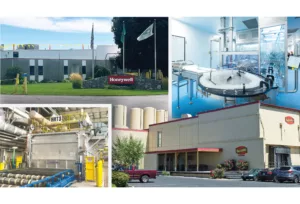Bond tool eyed for light rail
Tax-increment financing could help county pick up part of potentially big tab
The Spokane County commissioners are discussing the idea of establishing a tax-increment financing district along the route of a proposed light-rail commuter system in the Spokane Valley to help get the train system built.
County Commissioner Kate McCaslin says the economic-development tool might be useful to cover some of the costs associated with the project and perhaps speed up its development. Discussions have been conceptual thus far, she says, and commissioners havent determined how much money could be generated by such a district. They also havent determined the potential boundaries of a tax-increment financing district that would be created in conjunction with the light-rail project, though it would be along the light rails proposed route, McCaslin says.
The envisioned light-rail system would run 16.5 miles from downtown Spokane to Liberty Lake. McCaslin says detailed cost projections havent been completed yet for the long-proposed project, but a system of that scope typically would be expected to cost $325 million to $355 million, based on typical cost-per-mile estimates.
Proponents of the light-rail system plan to seek federal funds to pay for a large portion of the project. Glenn Miles, transportation manager for the Spokane Regional Transportation Council, says federal funds have accounted for 50 percent to 60 percent of the total cost of comparable projects in other U.S. cities. He says the projects backers might be able to secure some state funds also, but a large percentage of the money to pay for the system would have to be generated locally.
McCaslin says tax-increment financing could provide some of the local funds. Miles says the rest of the local funds could come from an increase of up to 0.6 percent in the sales tax in the Spokane area that would be allocated to transit use. Such an increase would require voter approval. The transit tax now is 0.3 percent.
A few years ago, proponents projected that a light-rail project here would be funded in equal one-third shares by the federal, state, and local governments, Miles says. The passage of Initiative 695 in 1999, however, replaced the states motor-vehicle excise tax with a substantially smaller, flat $30 license fee. That voter-approved initiative slashed the states transit funds, which light-rail advocates here had hoped would help pay for a commuter train.
Attorney Roy Koegen, a partner in the Spokane office of Seattle-based Perkins Coie LLP who serves as Spokane Countys bond counsel, says tax-increment financing can serve larger projects such as a light-rail system well, though its more commonly used to fund infrastructure improvements so property can be developed.
Its not a panacea, but it helps, he says.
McCaslin says light-rail projects in other cities have spurred economic development near the tracks. In the Portland area, for instance, development has mushroomed along a light-rail extension, she says.
Theres a distinct difference between the effects of a freeway and a light-rail system, McCaslin says. You dont see the declines in property values around light rail that you see around a freeway. Instead, property values along light-rail lines tend to shoot up, she says.
Conceptual engineering on the light-rail project is under way, and preliminary engineering is expected to start later this year or early next year. McCaslin says a rail system could be built and in operation by 2007 if everything went perfectly.
In the future, a north-south route could be added that would extend light-rail service between downtown Spokane and Deer Park. Service also could be extended east to Coeur dAlene and west to Spokane International Airport.
Generally speaking, tax-increment financing allows a city or county to issue bonds to pay for infrastructure improvements in a development, then use most of the resulting increases in property-tax revenues in that area go to pay off the debt. After the debt is paid, those tax revenues would flow to the city or county.
Meanwhile, developers with six different projects still are mulling whether to ask officials to tap tax-increment financing to make infrastructure improvements for their projects. Koegen says the public-hearing process on using tax-increment financing for one of those projects, the Pacific Northwest Technology Park on the West Plains, is expected to start soon.
Related Articles


_c.webp?t=1763626051)

_web.webp?t=1764835652)
